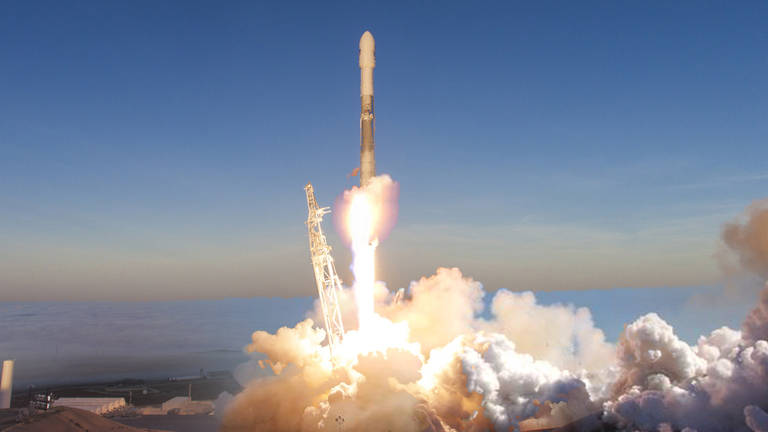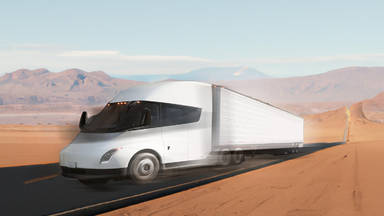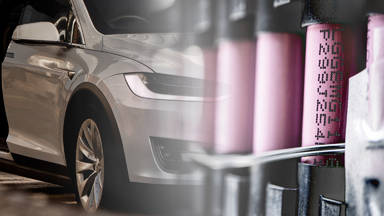
Watching a SpaceX booster land is a joy, and with the help of Starlink, SpaceX has succeeded in making the event more frequent than ever before, often launching multiple rockets every single month. Although launching Falcon 9's has become extremely common, the speed of reusing boosters hasn't really improved much.
In 2020, SpaceX did set the record for fastest turnaround, but that was only three days faster than the space shuttle, coming in at 51 days. Evidently, this is quite far off from Elon Musk's vision that SpaceX would use rockets in less than 24 hours by 2020, so why does it still take SpaceX so long to reuse a booster?
Well in order to answer this question, we have to first take a look at where exactly the time is spent in the first place. Starting with the actual refurbishment process. Before any work on the booster actually begins, any excess fuel in the tanks will be drained and in some cases burned. SpaceX has been pretty quiet about how exactly the refurbishment process works. So we will have to rely on tidbits we got here and there.
Hans Koenigsmann, the vice president of SpaceX, revealed that the majority of the work is the engine. Even though, the booster is designed to be fully reusable, SpaceX often replaces certain parts like the turbine wheels. This is not to say that these parts cannot be reused. However, reusing them non-negotiably increases the possibility of complications during flight. So SpaceX has stuck to a good old rule of better safe than sorry.
Aside from swapping parts in the engine, SpaceX also has to clean the nine Merlin Vacuum engine turbines which, according to Musk, is quite difficult. Moving on from the engines, SpaceX boosters often show signs of minor damage to the heat shield and aero cover from debris and the high temperatures and pressures the booster experiences. Hans Koenigsmann assures us that this is completely normal, but this, nonetheless, increases the refurbishment time.
After this, SpaceX inspects the fuel tanks. However, on occasion they have found some damage caused by the thermal protection system. SpaceX has revealed that the entire inspection / processing stage is usually completed within 30 days.
Once all the inspections, repairs, and replacements are done, SpaceX moves on to the testing stage. In this stage, SpaceX will go ahead and complete many of the common rocket tests like the static fire test. Again, these tests are not actually required to have a successful flight. However, this can prevent a more serious disaster during the actual flight.
So, as you can see, refurbishing a booster and getting it ready for launch, generally takes several weeks and this is where the bulk of the time between launches is spent. Fortunately though, most of the processes during refurbishment is simply precautionary steps so as Falcon 9 continues to prove its reliability.
SpaceX will likely be able to cut down on the inspections and replacements they have to complete between flights with minimal additional risk. The refurbishment process is not the only step between Falcon 9 launches though, another major hurdle when it comes to reusing a booster, is the rest of the rocket. After all, there is no purpose in just launching a booster into space.
SpaceX has worked on making as many parts of the rocket reusable as possible, even including the fairings. But there are still major parts that are not reusable yet. Specifically, the second stage of the rocket. SpaceX originally tried to give the second stage of the rocket the ability to land, just like the boosters. However, there are a variety of problems in actually doing this.
For starters, the second stage is traveling over three times faster than the first stage, and more importantly, every kilogram of heat shields and landing gear you add on to the second stage is one less kilogram of payload. Thus, SpaceX decided that instead of reducing payload capacity, it would actually just be cheaper to build a new second stage every single launch. Although this makes more sense economically, this severely hinders SpaceX turnaround time with boosters.
Even if you are able to turn around a booster every 24 hours like Elon Musk envisions, it's gonna be quite difficult for SpaceX to pop out a ready-to-launch second stage every single day. Similarly, SpaceX will also need a payload every single day for it to actually make sense to launch on such a tight schedule.
Currently, there aren't nearly enough commercial customers or Starlink missions to make that a viable operation. So, not only does the actual refurbishment of the booster still take many weeks, but you also have to take into consideration the manufacturing and testing time for all the other parts of the rocket as well.
Anyway, moving on from technical challenges, we have logistical challenges. Rocket boosters may look nice, small, and easy to handle, but in reality the Falcon 9 booster is about 50 meters tall (or more than 11 stories tall.) as a result transporting boosters is not easy by any means. For example, the booster often lands in the Atlantic ocean, 680 kilometers away from the coast. Transporting it back to land itself takes up to a week.
Here's the point: SpaceX can design their rockets to be as reusable as possible, but many of the factors required for a fast turnaround are out of their hands. This isn't to say that it'll take SpaceX another decade to reach a 24-hour turnaround time. It is very possible that even within the next few years, SpaceX attempts to complete a 24-hour turnaround and succeeds. But at that point, it will still not yet be a reliable and consistent event.
In other words, SpaceX likely had to pull a lot of strings to make this happen. They probably launched an extremely light payload on their first launch, so that they can have the booster land back at the launch site, as opposed to a drone ship. Similarly, they would likely skip several tests and inspections which they would never skip during a crewed mission. Thus, the first time SpaceX succeeds in this feat, it will likely be more of a stunt, as opposed to something SpaceX will employ on a regular basis.
Something else to keep in mind is that there is literally no practical reason for SpaceX to even do this at this point in time. SpaceX has several Falcon 9 boosters, so even if they wanted to launch every single day, they only need to bring down the turnaround time to just one or two weeks to make this possible. Considering this, the Falcon 9 is very unlikely to evolve into a daily launcher. Although as Starship develops into a full-scale rocket, many of these issues may be eliminated. Starship is only a one-stage rocket and is fully reusable. So we won't have to deal with manufacturing parts between each launch. Also it is expected that Starship will mostly be launching from and landing on drone ships in the ocean, so that should significantly reduce logistical issues.
If Starship doesn't return to land between launches, SpaceX will have to figure out how to inspect and repair if needed at sea. SpaceX will also have to figure out how to refill Starship regularly at sea. Perhaps the crazy people at SpaceX have already thought of all of this and have a plan. So, hopefully, we do eventually get rapid and maybe even instant reusability, but at this point this is still like a decade, if not decades away.









